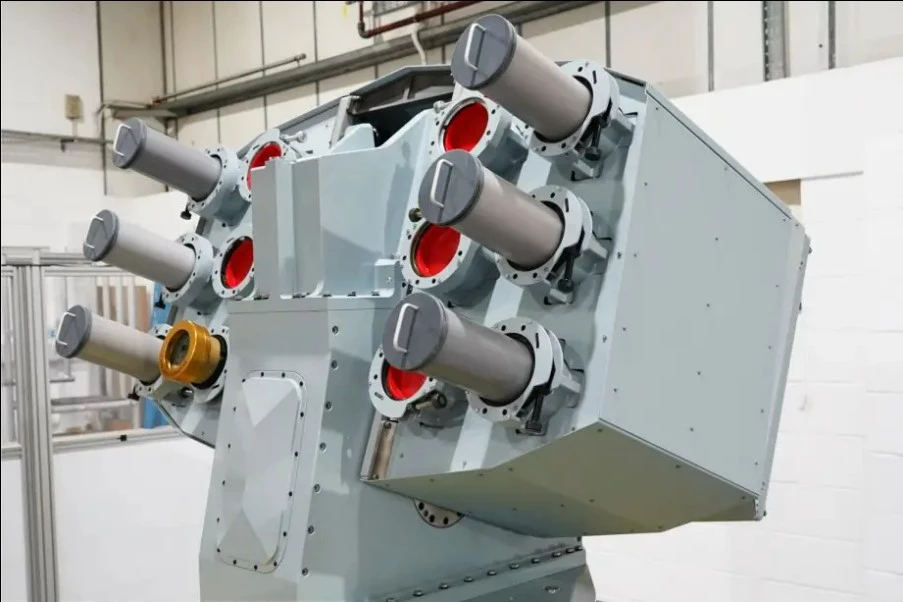The Royal Navy is banking on state-of-the-art decoy launchers to protect its stealth ships. The £135 million (US$170 million) Ancilia Trainable Decoy Launcher project will counter the latest missile and drone threats.
During the Second World War, the British developed the world's first doomsday weapon. We're not talking about the A-bomb, but a weapon that is so effective, yet so easy to comprehend and imitate, that there's a very strong incentive to never use it at all.
In this case it was a system called Window, which is just shredded aluminum foil that can be tossed out of a bomber. This foil would give the incoming bomber force a huge advantage because it would reflect back enemy radar, confusing and blinding it. It sounds like a great idea, but the Allies were reluctant to use it because the first time it was deployed the Germans would be able to immediately imitate it.
Ironically, the Germans had a similar weapon that they refused to use for the same reason.
These radar decoys, now called chaff, became standard kit during the Cold War, but it wasn't until the 1982 Falklands War that the technology got its first real workout. The Falklands was history's first missile war and the Argentinian forces refrained from directly engaging with the Royal Navy Task Force. Instead, the Argentinian Navy launched wave after wave of Exocet missiles, resulting in the loss of seven British ships.
This would have been far worse if it weren't for the chaff launchers that fired a large number of clouds of finely chopped aluminum and plastic that hid the warships from the incoming missiles' radar, preventing them from locking on target.
Today, with the development of increasingly sophisticated and networked weapons, countermeasures have gone far beyond simple chaff. Modern warships are extremely stealthy with much of their equipment tucked away inside hulls designed to absorb or deflect radar signals until a frigate has the radar signature of a speedboat. They also have decoy systems that can handle a wide range of threats, including missiles and drones coming in swarms at various altitudes and speeds.
As a result, an arms race between countermeasures and counter-countermeasures is raging between the major military powers. For example, it's now relatively easy to see through a chaff decoy by studying its Doppler effect. Chaff moves slower than the target and the radar can be programmed to ignore it. However, it's also possible for a friendly craft to shine a radar beam on the chaff that, when reflected, makes it look like the target.
Built by Systems Engineering & Assessment Ltd (SEA), the Ancilia Trainable Decoy Launcher is designed to handle multiple threats – not only radar, but infrared homing systems and anything up to and including hypersonic missiles.
It does this using a set of six launching tubes that fire a variety of canisters loaded with, among other payloads, a modern version of chaff that can essentially mimic the stealth signature of the target ship, flares to attract infrared missiles, tiny corner reflectors that send a powerful reflection of an incoming radar beam back to its source to blind it. It's also made with modern electronics and software so it integrates with command and control systems, third-party Electronic Support Measures (ESM). and has a minimal deck footprint.
The new launchers will be retrofitted to the Navy's Type 26 and Type 31 frigates and Type 45 destroyers, and boast one rather neat party piece. Decoy launchers are normally fixed to the deck, but the Ancilla is dynamic. The 130-mm launcher can shift on both axes and can come to bear on a threat without having to turn the ship. This is good because sometimes the turn makes the ship into an easy target.
"In a time of global instability, it is vital we protect the Royal Navy in the best possible way to ensure national security," said James Cartlidge, Minister for Defence Procurement. "With recent attacks towards HMS Diamond and HMS Richmond in the Red Sea, it’s crucial our sailors have the latest technology to best defend themselves and the fleet. The new Trainable Decoy Launcher technology is an improvement on speed and agility and highlights more excellent work from UK companies in backing UK defense."
Of course, such systems like this have a very high degree of classification about them, so a lot of details aren't public. However, we do know that this stealth system is there.
Or do we?
Source: MoD





